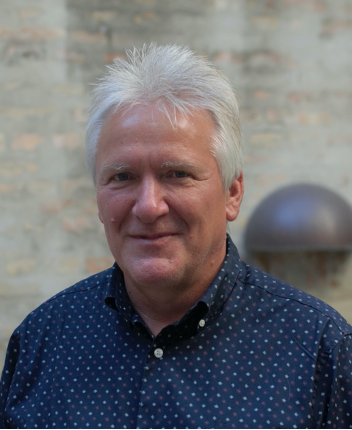PER HEISELBERG:
Building Demand Response for Smart Energy System Flexibility

Optimization of energy systems often focuses on the grid side and does not integrate building systems, which limits the optimization and flexibility opportunities considerably leaving an untapped potential. The ongoing digital transition brings the possibility of real-time energy resource management to building owners/managers and energy system operators making it possible to tap into it. This presentation focuses on the demand response potential of buildings and HVAC systems and how this can be for the benefit of smart energy system flexibility and optimization.
Bio: Per Heiselberg is Professor and Deputy Head of Department for Research at the Department of the Built Environment at Aalborg University, Denmark.
His research and teaching subjects are within architectural engineering and are focused on: Building energy-efficiency, Design and operation of near and net zero energy buildings, Buildings role as “prosumers” in a future smart energy system as well as on Ventilation and air flow in buildings. He has published more than 600 publications on these subjects.
He is a member of the Danish Council on Climate Change (https://klimaraadet.dk/en), that develops energy and climate change policy recommendations for the Danish Government to realize a cost-effective transition to a low carbon society in 2050.
He has been involved in more than 20 EU and IEA research projects related to building energy efficiency in the past 30 years.
GINGER SCOGGINS
Update on ASHRAE Task Force For Building Decarbonization

Bio: M. Ginger Scoggins, PE, CxA, CEM, LEED AP is the President of Engineered Designs, Inc., a full-service plumbing, HVAC, and electrical design firm in Raleigh, NC. She is a licensed mechanical engineer with 30 years of experience in the design and construction of a variety of building types and is also a certified Commissioning Agent.
BJARNE OLESEN
The European Way to Zero Emission Buildings Without Sacrificing Indoor Environmental Quality

The EU has set a goal for all new buildings by 2030 to be zero carbon emission buildings, and that by 2050, all buildings will be zero emission. This is a change from the earlier focus on near zero energy buildings. The driver is several directives from the EU-commission that must be implemented in national regulation. The most important is the Energy Performance of Buildings Directive (EPB-D), that is being revised and republished in spring 2023. The indoor environmental quality (IEQ) is not directly dealt with in the directives; but it is referred to national regulations regarding IEQ. The package of standards that can be used for evaluating the energy performance do, however, include a standard dealing with IEQ (thermal comfort, indoor air quality, lighting, acoustic), which must be used for input to the energy calculations. Increase in energy renovations are essential to meet these goals. A “renovation passport” for buildings will be made for buildings, that include a renovation plan and possible improvements of IEQ.
Bio: Bjarne Olesen, Ph.D., Fellow ASHRAE, was ASHRAE’s President for the 2017-2018 term. Olesen has previously served on the Board of Directors as Treasurer, Vice President and Director-at-Large.
In addition to his time served on the Board of Directors, Olesen has been a part of many technical committees and been a Coordinating Officer of various committees, most recently: Conferences and Expositions Committee, Chapter Technology Transfer Committee, Honors and Awards Committee, Grassroots Government Advocacy Committee, Membership Promotion Committee, Research Promotion Committee, Student Activities Committee and Young Engineers in ASHRAE Committee.
For his efforts and dedication to ASHRAE, Olesen is the recipient of the Lou Flagg Historical Award, Fellow Award, Exceptional Service Award and Distinguished Service Award.
Olesen earned his Ph.D. in Heating and Air Conditioning in 1975 and Master of Science in Civil Engineering in 1972 – both degrees obtained from the Technical University of Denmark.